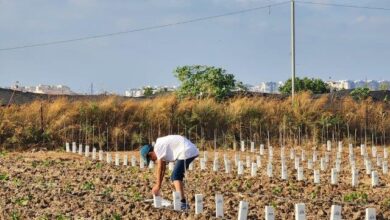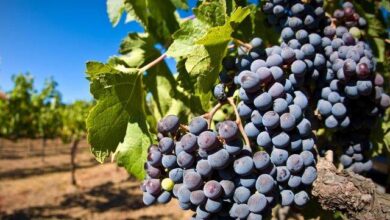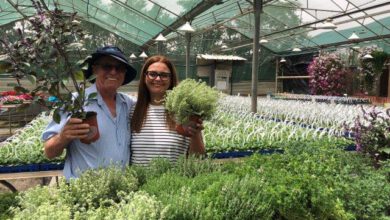Genetic Transformation of Solidago Canadensis
A method by which Goldenrod (Solidago Canadensis) plants, normally uni-colored plants, can be transformed into multi-colored plant
Oded Skaliter* oded.skaliter@mail.huji.ac.il

this article is based on the original manuscript prepared by oded skaliter, jasmin ravid, elena ketrarou, noam shpayer, julius ben ari, gony dvir, moran farhi, yuling yue and alexander vainstein, the title of which can be found in the link below (*), from the institute of plant sciences and genetics in agriculture of the faculty of agriculture of the hebrew university of jerusalem in rechovot, israel.
this article describes a method by which goldenrod (solidago canadensis) plants, normally uni-colored plants, can be transformed into multi-colored plants. the goldenrod plant, a flowering plant which belongs to the asteraceae family, is a perennial plant which can attain three waves of flowering per year. the flower heads are comprised of distinct ray and disc florets. some of these heads are usually grouped in complex inflorescences. the plant’s flowers are usually used for filling in flower arrangements. all the varieties of solidago plants existing today contain carotenoid – derived yellowish flowers. the carotenoids are organic pigments produced by a variety of organisms – many species of algae and higher plants are good examples – which usually function in these organisms as antioxidants.

another group of pigments, the anthocyanins, belong to the flavonoid family. they originate from the phenylpropanoid biochemical pathway, the primary precursor being the amino acid phenylalanine. the anthocyanins accumulate in plant cell vacuoles, which are round minuscule bodies which function as a reservoir for different chemicals which the plant needs and uses. the plant cells where this process takes place are usually the epidermal cells of flowers, fruits and leaves.
depending on conditions prevailing in their surroundings (like, for instance, the ph), the anthocyanins attain the following colors : orange, red or blue. many recent studies have used means of genetic engineering to change flower colors.
for example, in chrysanthemum, rose and carnation , the introduction by these means of a certain biosynthetic enzyme led to the formation of transgenic flowers containing a precursor for anthocyanin formation called delphinidin and its derivatives.
in addition to the above-mentioned biosynthetic enzymes, a gene which encodes a transcription factor called pap1- short for production of anthocyanin pigment 1- was harnessed for the generation of new colors in plants.
this factor positively regulates (controls) biosynthetic genes in the above-mentioned phenylpropanoid biochemical pathway. ectopic (out of place) expression of the above-mentioned genes brings about the accumulation of anthocyanin pigments in flower tissues. in this work a transformation and regeneration system for solidago canadensis plants was developed for generating transgenic lines that would have a new flower phenotype. these transgenic lines expressing the above-mentioned transcription factor pap1.
the end result was the production of purple/red-colored solidago flowers. the methods used for achieving this goal are detailed in the original article (which can be found in the following link : https://bit.ly/35xofi3. a shoot regeneration efficiency test on proper tissue-culture medium of three different commercial cultivars (cvs) of solidago canadensis plants was carried out. the three cultivars were tara (ta), ivory glory (ig) and golden glory (gg). of the three, the cv. tara showed the highest adventitious shoot regeneration efficiency. the cultivar gg being intermediate and the cultivar ig showing the lowest regeneration efficiency.
all the adventitious shoots were then placed in a rooting medium and only when a well-developed root system was established, were the plantlets transferred to a greenhouse where they developed normally till flowering. to test the transform efficiencies of the three solidago cultivars, an agrobacterium tumefaciens strain carrying a plasmid harboring a gene which codes for the enzyme gus (β-glucuronidase), a reporter gene which transforms colorless substrates like x-gluc to blue.
the histochemical assay applied to the gus-transformed plants revealed the highest transformation efficiency for gg.
gg cultivar was therefore selected for stable transformation with a binary vector carrying pap1 transcription factor. the pap1 transformation produced plantlets with uniform pigment distribution in their leaves, the color of which was purple. in order to confirm the involvement of pap1in the activation of the genes of the anthocyanin-biosynthesis pathway, an rt-pcr (reverse-transcriptase pcr) test of two of the biosynthetic genes controlling anthocyanin formation, was carried out, yielding two authentic dna fragments. all in all it seems that the study presented here shows that it is possible to overcome genetic barriers in the form of limited gene pools in some commercially important flowering plants like solidago and gypsophila.
in some cases, introducing enzymes and transcription factors (genes) into these plants’ genomes by implementing genetic engineering methods (mainly the use of an agrobacterium tumefaciens strain as a carrier of vectors on its plasmid), with the aim of manipulating its biosynthetic pathway, has proven successful. however, a prerequisite for the successful use of the above-described method is the development of a viable, dependable and most of all a repeatable protocol. the work described in this article is based on prior attempts to transform other plants, beside solidago canadensis, belonging to the asteraceae family, like sunflower, lettuce and dahlia.
the ability of solidago to undergo agrobacterium-mediated genetic transformation was tested. it showed that the generation of gus-expressing solidago plants was achievable in all three cvs. tested: tara, ivory glory and golden glory. golden glory showed the highest stable transformation efficiency – about 5% – making it the most competent cv. tara showed the lowest stable transformation efficiency, despite the fact that this cv had the highest regeneration efficiency. the results cited above show the close relationship between cultivar regeneration capacity and cell tendency to undergo transformation. such a transformation was performed successfully on solidago plants by using the pap1 (production of anthocyanin pigment 1) transcription factor.
the result of this transformation was rather clear-cut: only pap1 expressing transgenic lines accumulated delphinidin, an anthocyanin precursor, in flowers and leaves of mature plants. the levels of the anthocyanins in the experimental lines were in close correlation with the expression of pap1. furthermore, pap1 activated two enzymes which play a role in the anthocyanin biosynthetic pathway in pap1-transgenic solidago plants. these transformation products/ transcripts were lacking in control plants. to summarize the above description, only pap1-expressing transgenic plants showed anthocyanin pigmentation in their flowers. therefore, this specific transcription factor can be looked upon as a more compatible factor for lancing the anthocyanin biosynthetic pathway in transgenic solidago canadensis plants. this article then, presents a viable genetic transformation protocol which presents an advanced molecular breeding technique which could be used to overcome breeding limitations in turning normally single-colored solidago canadensis plants into novel colored plants.




